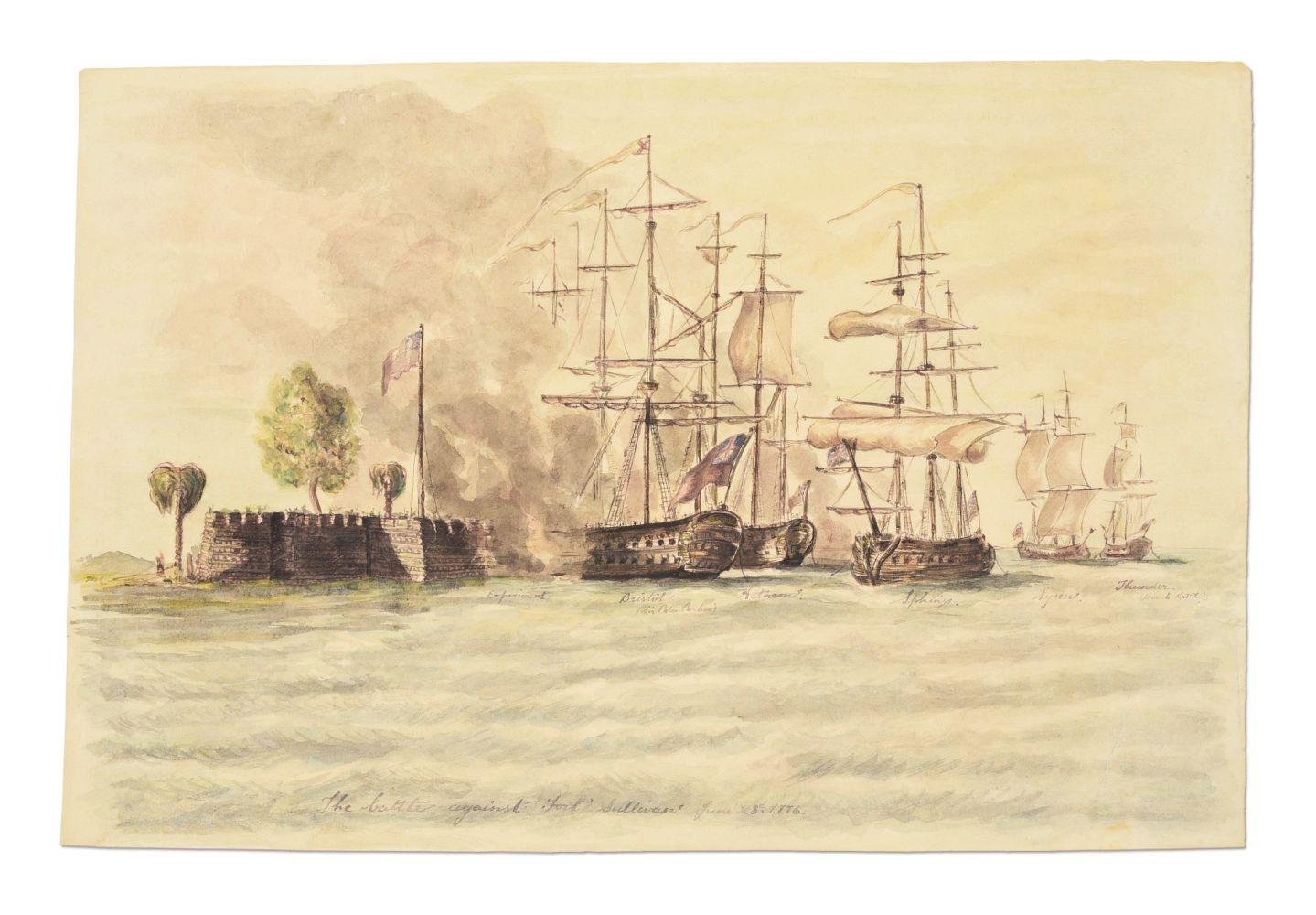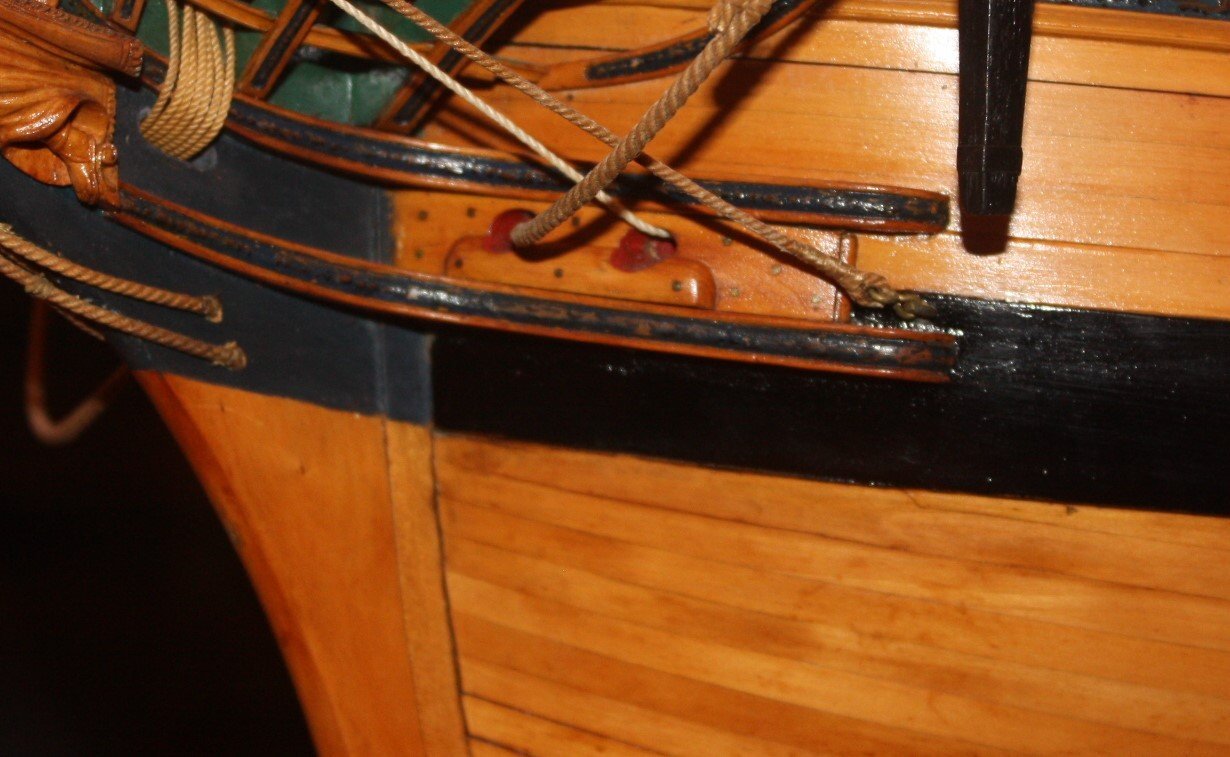-
Posts
8,149 -
Joined
-
Last visited
Content Type
Profiles
Forums
Gallery
Events
Everything posted by allanyed
-
Congrats on taking the time to find better material and thanks for sharing your information.!!! The burlap-like junk found in some kits is so far out of scale it is shameful and have completely ruined many otherwise very nice looking models. Allan
- 366 replies
-
- bellerophon
- victory models
-
(and 2 more)
Tagged with:
-
- 2,215 replies
-
The ensign really does look good! Can you give us the name of the textile paint and the TC of the cotton cloth you used? Thanks Allan
- 366 replies
-
- bellerophon
- victory models
-
(and 2 more)
Tagged with:
-
The video really is interesting and obviously took a lot of work. But, there are a number of things in the video that are wrong, so I would not rely on it without finding confirming information elsewhere. For example the art work for the guns does not show the hooks on the end of the lines. Also, the outboard trucks look to be the same diameter as the inboard trucks rather than having those closest to the bulwarks substantially larger in diameter. Regarding the blocks themselves, these are supposed to be 32 pounders on the lower gun deck so they would have carried the double and single block if Caruana is to be believed. In the end, it does not take away from your workmanship in the least, I was just curious to find specific contemporary information one way or the other. Allan
- 233 replies
-
- Indefatigable
- Vanguard Models
-
(and 1 more)
Tagged with:
-
ECK Continues to be VERY neatly done! This subject has reared its ugly head a number of times, so apologies for raising it again. I am still hoping to find out if there is any contemporary source regarding the rigging blocks used on the guns. Do you have a source that suggested that you use a double block and a single block on the running out tackle for the cannon instead of two singles? From The History of English Sea Ordnance, Volume II, page 386 by Adrian Caruana The running out tackle consisted of a rope (the fall) and two blocks (both a single except for 32-pdrs which had one single and one double), each equipped with a hook. The same applied to the train tackle which you do show with two singles. I have no idea what his source is for this information, and I have not found any contemporary source that actually addresses this. I have seen modern day drawings and modern reproductions but nothing stating it is based on actual practice in the appropriate time frame. Allan
- 233 replies
-
- Indefatigable
- Vanguard Models
-
(and 1 more)
Tagged with:
-
Thank you for the great little treatise Bob! I will surely try the shellac in the future to see if it works as well or better than matte medium which I find also works very well. Allan
-
Thukydides From what I researched, when there was a fleet sailing, the red squadron was headed by the senior most commander/admiral and carried the red ensign, the second (white ensign) was lead by the second most senior commander, and the blue by the least senior. I believe single squadrons would carry red squadrons if not part of a fleet. Hopefully some member has more details on this or correct things if I have it wrong. I tape silk span to a standard sheet of paper when printing flags. When I do the drawing in CAD I copy in place twice so it will print exactly the same three times. I use the print command from the CAD program to be sure it triple prints. Hope this makes some sense. Allan
-

Lettering
allanyed replied to bobc622's topic in Painting, finishing and weathering products and techniques
What/where will these be used? Is it for a plastic model or wood or some other? A little more detail may bring up some alternative solutions that you would like to try. Allan -
GSV I have the red ensign and white ensigns drawn if you want them. (see below) Just let me know which one and what size and I can PM it to you or you can try to copy and use these. It is printed so you can fold it over as it obviously needs to be done on both sides in mirror image. If I go with silk span I triple print one side only as the ink soaks through and the flag is not so thick having only a single layer. If you have any kind of CAD program you can do this as an alternate method rather than do two sides and fold it over. I also like to use silk span as it can be draped properly very easily. From what I have researched the white ensign is appropriate for second squadron vessels and the red for first squadron vessels. The white ensign design below was used between 1707 and 1800. The last photo shows the draped flag, & in this case it happens to be a US flag on a newly designed schooner. Allan '
-
Could not agree more. 😀 There was a uric acid (urine) treatment posted in the recent past that looked great as well . Would this work on this particular copper material as well as the steel wool treatment did for Kevin? Allan
- 443 replies
-
- Indefatigable
- Vanguard Models
-
(and 1 more)
Tagged with:
-
Maybe put up a separate post in one of the other forums such as the plans forum or framing, planking forum here at MSW and ask if anyone can steer you to some well done tutorials or books and such. Not a tutorial, but Doris' build log of the Royal Katherine here at MSW may be of help to you. https://modelshipworld.com/topic/15981-hms-royal-katherine-1664-by-doris-155-card/#comment-497721
- 24 replies
-
Your constant attention to detail is an inspiration to a lot of members. Allan
- 648 replies
-
- Indefatigable
- Vanguard Models
-
(and 1 more)
Tagged with:
-
See you again in 2025 Mitchel 😁 Just kidding, I really do hope you find the time to get into the build and share photos with us. STAY OUT OF THE SHOPS, (unless they have tools and models and fun stuff. 🤪) Cheers Allan
- 24 replies
-
Welcome to MSW Will. Love your neck of the woods and its history. Get to visit north and west of you with one of our boys and his family in New Hanover. Love all the old stone homes including the Fisher Crouse house circa 1770. Hope to see you have some fun here. Allan
-
Always a joy to check in on your build log. Don't know if you have seen them , but there have been a couple recent posts here at MSW on diminishing the thickness of the wales as it approaches the rabbet. Most modelers are unaware of this feature, but it is something to consider. Your choice of course, but maybe something to think about. Allan
- 648 replies
-
- Indefatigable
- Vanguard Models
-
(and 1 more)
Tagged with:
-
Welcome Eindride Your project and the reason for it are extremely interesting! Best of luck with it. Hope you start a build log and post some photos of your replicas. Allan
-

Hello All - From Santa Barbara, CA
allanyed replied to Blu330ciracer's topic in New member Introductions
Blu WELCOME aboard! Are you researching the ship or the model? If the ship itself I assume you have found the The Rudder article from 1919 https://www.google.com/books/edition/The_Rudder/Z7M6AAAAMAAJ?hl=en&gbpv=1&bsq=clipper+thermopylae&pg=PA583&printsec=frontcover and have contacted the folks at the Aberdeen Museum. https://www.aberdeencity.gov.uk/AAGM/about-us/contact-us Research can be very rewarding as well as very frustrating. Some years back, two of us spent several hundred hours researching one particular ship before cutting one piece of wood, so do not get frustrated. Allan -
Alain Bienvenue a toi, notre nouvel ami Mr. Tosti's books are among the very best so I am sure you will enjoy your adventure. Allan
-
ECK Hope your summer in NC is going well.😀 I never thought about this design feature of tapered wales at the bow until it came up in a discussion about 15 years ago and again with Grant Walker at Preble Hall in Annapolis in 2011 where the diminishing thickness is very clear on the models. I wish I had better closeups to share. It is not so difficult to make this taper even if the wales are on the model, but before the bow and hawse hole fixtures are in place. Might take some fiddling at the rabbet, but it can be done. Allan
- 233 replies
-
- Indefatigable
- Vanguard Models
-
(and 1 more)
Tagged with:
-
Which one are you going to rig? She is possibly best known for being part of the squadron in the battle of Sullivan's Island. As a single squadron, I suspect she carried a red ensign at least at that point in her history. You probably already found this in your research, but if not the only pic I could find is the watercolor attributed to James Peale and it appears it was a the red ensign rather than the white or blue that the squadron carried. Note the Sphinx is third ship from the right. Allan
-
Hi James, Below are a few pics, the first of HMS Squirrel. The next two are from Preble Hall. In the second photo the wales can be seen to be flush at the rabbet with the other planking. In the third photo the wales can be seen protruding below the black strake on the far left and nearly flush with the other planking as it reaches the hawse holes. My apologies if these are not super clear as my photography abilities are lacking along with many other things.😕 You are welcome ECK!😀
- 233 replies
-
- Indefatigable
- Vanguard Models
-
(and 1 more)
Tagged with:
-
Very nice kit and your planking is looking very well done. Are you going to taper the wales so they appear to sit in the rabbet like the surrounding planking? If you look at contemporary models you will see that the wales do not stand proud at the rabbet otherwise they cannot be seated in that groove. Is this addressed in your instructions? The taper on contemporary models appears to start at about the position where the cant frames are located. Allan
- 233 replies
-
- Indefatigable
- Vanguard Models
-
(and 1 more)
Tagged with:
About us
Modelshipworld - Advancing Ship Modeling through Research
SSL Secured
Your security is important for us so this Website is SSL-Secured
NRG Mailing Address
Nautical Research Guild
237 South Lincoln Street
Westmont IL, 60559-1917
Model Ship World ® and the MSW logo are Registered Trademarks, and belong to the Nautical Research Guild (United States Patent and Trademark Office: No. 6,929,264 & No. 6,929,274, registered Dec. 20, 2022)
Helpful Links
About the NRG
If you enjoy building ship models that are historically accurate as well as beautiful, then The Nautical Research Guild (NRG) is just right for you.
The Guild is a non-profit educational organization whose mission is to “Advance Ship Modeling Through Research”. We provide support to our members in their efforts to raise the quality of their model ships.
The Nautical Research Guild has published our world-renowned quarterly magazine, The Nautical Research Journal, since 1955. The pages of the Journal are full of articles by accomplished ship modelers who show you how they create those exquisite details on their models, and by maritime historians who show you the correct details to build. The Journal is available in both print and digital editions. Go to the NRG web site (www.thenrg.org) to download a complimentary digital copy of the Journal. The NRG also publishes plan sets, books and compilations of back issues of the Journal and the former Ships in Scale and Model Ship Builder magazines.






